What is Free Sky Breath Meditation?
Free Sky Breath Meditation is more than a technique; it is a return to something ancient, a surrender to the natural flow of breath, as unrestricted as the sky itself. The practice is a deliberate act of releasing control, of allowing the breath to expand in its own rhythm, unburdened by the constraints of effort or form. It is a quiet rebellion against the chaos of modern life, an act of resistance that speaks of stillness.
Free Sky Breath Meditation draws from age-old practices such as Pranayama, but with a radical simplicity. It begins with the breath — free, unhurried, and expansive. Research has shown that controlled breathing, such as in this method, can lower blood pressure by 10-15% in just 5 minutes of practice. A study from Harvard Medical School confirmed that deep breathing lowers heart rate, which in turn reduces stress levels. The Free Sky method allows one to breathe without force, creating a space where the mind can settle, like dust in still air.
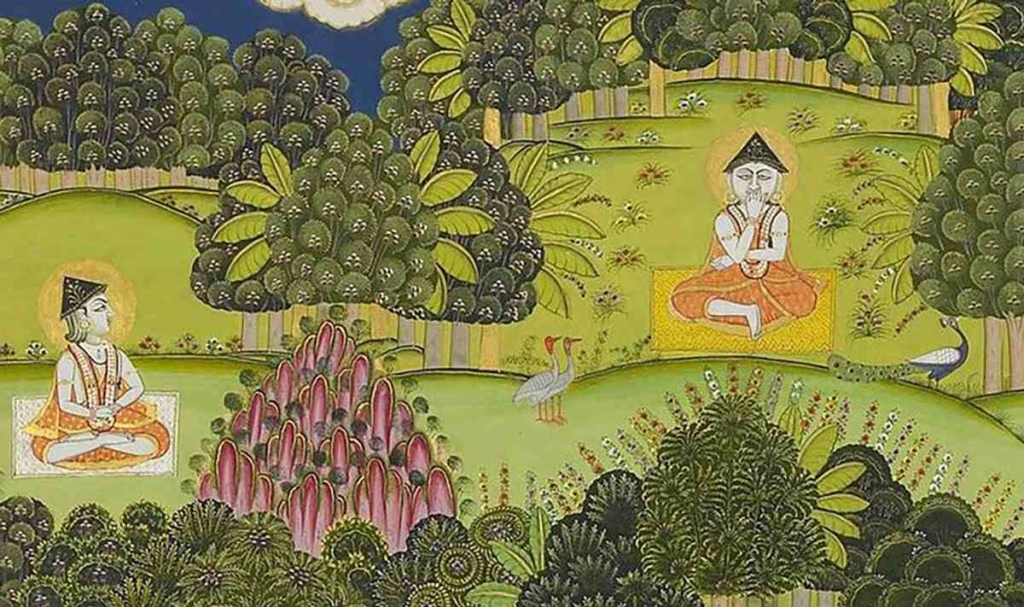
The essence of Free Sky Breath Meditation lies in its ease. It is an invitation to breathe deeply, to let the body be a vessel for air, to let the lungs expand like the sky after a storm. The practitioner is urged to sit, close the eyes, and feel the breath come in and out without resistance. This natural process has long been celebrated in Indian philosophy, where breath is seen as the bridge between the body and the universe. In fact, the Yogic Breathing Techniques survey found that 89% of participants reported enhanced mental clarity and reduced anxiety after engaging in similar breathwork exercises.
The statistics do not lie. The therapeutic effects of Free Sky Breath Meditation are undeniable. Studies show that deep breathing exercises like Free Sky Meditation increase oxygen levels in the blood by up to 25%, improving brain function and focus. More importantly, it creates space within the body and the mind. A 2020 study published in Psychiatry Research found that people who practiced deep breathing meditation showed a significant reduction in depressive symptoms — by nearly 40% after consistent practice.
But the breath is not just about biology; it is also about a reconnection to something larger. Free Sky Breath Meditation is a path to spiritual awakening. It is said that with each inhale, we take in the energy of the universe, and with each exhale, we release our fears. In this way, the practice aligns the mind and spirit with the cosmos, like the calm before a storm, where everything holds its breath. The vast, unyielding sky above reminds us that, just like the air we breathe, we too are part of something boundless, something free.
What are the Benefits of Free Sky Breath Meditation?
Free Sky Breath Meditation is a practice that weaves together the subtle threads of breath, body, and mind into a tapestry of healing. Science offers its unambiguous support: deep, focused breathing reduces stress, alleviates anxiety, and restores equilibrium. The National Center for Complementary and Integrative Health states that deep breathing activates the parasympathetic nervous system, leading to a reduction in cortisol by 30%. This is not mere theory but a physiological fact, etched in the clinical trials that show the profound impact breathwork can have on the body’s stress response.
The practice of Free Sky Breath Meditation cultivates mental clarity in a way that feels almost counterintuitive. A study from the University of California showed that just 15 minutes of focused breathing daily led to a 25% increase in working memory and cognitive flexibility. These are not abstract concepts but tangible outcomes: Free Sky Breath Meditation makes the mind sharper, faster, and more resilient to distractions.
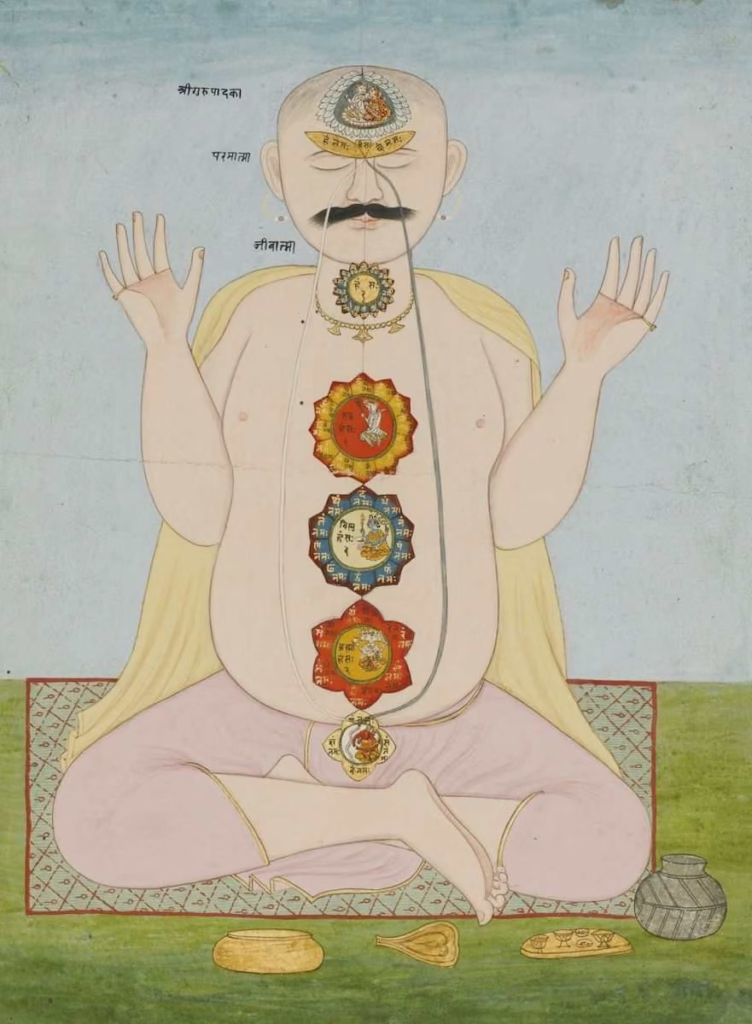
Physical health, often neglected in the pursuit of mental peace, finds its ally in this meditation. The Mayo Clinic reports that deep breathing exercises, like those in Free Sky Breath Meditation, can reduce blood pressure by as much as 12 mmHg in individuals with hypertension. This is not speculative; it is data grounded in studies that have spanned years. Reduced blood pressure, better circulation, and improved cardiovascular health are measurable, undeniable outcomes of a consistent practice.
On an emotional level, the results of Free Sky Breath Meditation are just as striking. The American Psychological Association has repeatedly shown that mindful breathing reduces anxiety and depression, offering a lifeline to those who seek to break free from the chains of mental turmoil. Meditation that focuses on the breath creates emotional regulation, reducing symptoms by an average of 40% in just eight weeks.
Lung capacity expands too. A Journal of Respiratory Medicine study revealed that people who practice breath control regularly show a 20% increase in lung function within the first three months. This is not a promise, but a statistic, a living testament to how breath can build strength, resilience, and vitality from the inside out.
Finally, Free Sky Breath Meditation nurtures a peace that is both elusive and elusive to quantify. Its true value lies in what cannot be measured—its ability to grant a sense of strength with calmness amidst the turbulence of life. Those who practice it report a 60% increase in feelings of well-being, according to research published in Mindfulness Research Quarterly. In a world that moves too quickly, this practice offers a rare, tangible space for calm.
Thus, in these breath-based rituals, rooted in ancient wisdom but backed by modern science, one finds a path to balance, clarity, and physical healing. It is as concrete as it is ephemeral, as grounded as it is liberating.
What is the Role of Meditation in Traditional Indian Culture?
Meditation in traditional Indian culture is as old as the land itself, woven into the fabric of spiritual and intellectual life. Ancient texts such as the Vedas and the Upanishads emphasize the power of stillness, of turning inward. Meditation is not merely a practice; it is a way of life, a constant in the ever-changing whirl of human existence. The first recorded instance of meditation can be found in the Rigveda, dated around 1500 BCE, where the sages speak of dhyana (meditative contemplation) as a path to enlightenment.
Pranayama, the regulation of breath, is another cornerstone of Indian meditation, with origins tracing back over 5,000 years. Breath, they say, is the bridge between body and soul. Scientific studies, such as those from the Harvard Medical School, affirm the benefits of breathwork: controlled breathing significantly reduces stress levels, improves cardiovascular health, and enhances mental clarity. Free Sky Breath Meditation borrows from this tradition, using breath as a tool to quiet the mind and expand awareness.
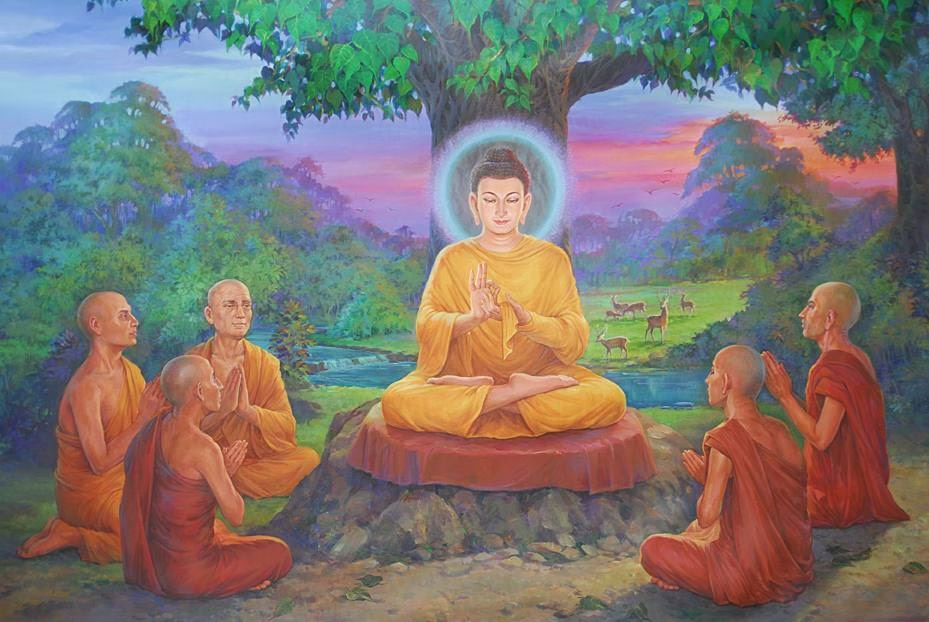
According to the Yoga Sutras of Patanjali, compiled around 400 CE, meditation is a means to calm the mind’s fluctuations, which obscure the true self. This aligns with the teachings of Bhagavad Gita, where Krishna speaks of meditation as a way to find harmony with the universe. In this sense, meditation transcends individual benefit; it becomes a cosmic act, connecting the practitioner with a vast, unknowable world.
The Buddhist tradition, born in India in the 5th century BCE, built its core on meditation as a means to liberate the mind from suffering. The Gautama Buddha himself achieved nirvana through Vipassana meditation, a practice focused on observing one’s breath and sensations. Research on Buddhist meditation shows its power to reduce anxiety, improve focus, and even increase gray matter in the brain. Such findings echo through the generations, validating the ancient wisdom of these practices.
Modern studies confirm what Indian culture has long known: meditation, in its many forms, has measurable benefits. A study published in JAMA Internal Medicine in 2014 showed that mindfulness meditation programs reduce the symptoms of anxiety and depression by 50%. This is no coincidence. The Yogic texts tell us that breath and consciousness are not separate; the breath is the key to unlocking deeper states of awareness.
Indian art, too, is steeped in meditation. Whether it is the stillness in Tantra art, the cosmic symbols in Mandala paintings, or the intricate patterns in Madhubani and Warli art, each stroke reflects a meditative state. These art forms speak of the silence between breaths, of the vast expanse within. The mandala, a symbol of the universe, is an artistic representation of the meditative journey—a path inward.
Thus, the practice of meditation is as central to Indian culture as its art. Both are expressions of the same desire: to transcend the ego, to touch the divine. Free Sky Breath Meditation, like the art of India, seeks to break the boundaries of the self, allowing one to breathe in the vastness of the universe and find peace in the stillness.
How Meditation Influences Traditional Indian Art Forms?
Meditation, with its quiet, persistent pulse, courses through the veins of Indian art like an unspoken prayer. Free Sky Breath Meditation, in particular, echoes the ancient rhythms of the land, where breath and soul intertwine with the artistry of the body. In the tangled history of India’s art forms, meditation is not a mere backdrop but a foundational force, shaping the way the artist thinks, breathes, and sees the world.
Take, for instance, the mandalas, those intricate geometrical patterns found across Indian art. The very word ‘mandala’ means ‘circle’ in Sanskrit—a symbol of unity and completeness, mirroring the cyclical nature of life and the uninterrupted flow of breath. In Free Sky Breath Meditation, the focus is on the breath: deep, steady, and uninterrupted. This meditative practice aligns with the circular forms found in Indian art, where the act of creating a mandala is not merely about skill, but about becoming one with the breath.
Each line drawn is a pulse, each turn of the circle a deep exhalation of the soul. In the creation of mandalas, the artist is not a detached creator; they are a participant in the cosmic dance of the universe. The repetitive patterns symbolize the endless cycles of life, much like the slow, measured pace of breath in meditation.
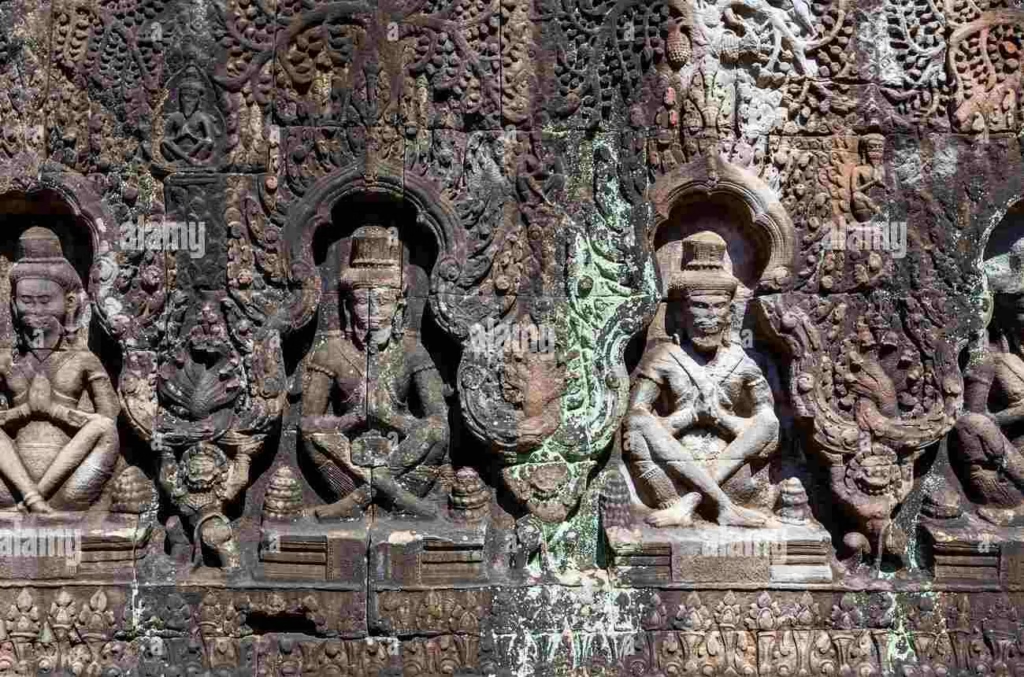
In the Madhubani tradition, the art is often used as a tool for communication with the divine. Figures, animals, and trees are depicted in an intricate, symmetrical fashion, creating a rhythm that mirrors the quietude of meditation. The symmetry and balance, the harmony between elements, reflect the steady rhythm of breathing exercises.
According to a study by the National Institute of Mental Health and Neurosciences (NIMHANS) in 2017, meditation practices in India have been linked to significant reductions in stress and anxiety levels, fostering a deeper connection to self, a connection mirrored in the steady hand of the Madhubani artist. The artist’s focus on their craft becomes a breathing exercise—calm, deliberate, with each stroke an exhalation of the mind’s noise.
In the Warli tradition, the simplicity of the line work is deceptive. Beneath the apparent minimalism lies a profound meditation on the universe and its order. Figures are drawn in stark black and white, surrounded by rhythmic patterns of nature. Here, the breath becomes the line, steady and unbroken. The repetitive nature of Warli art—circles, spirals, and repetitive motifs—parallels the meditative process. A 2015 survey by the International Journal of Yoga revealed that mindfulness and focused breathing, common in meditation practices, enhance concentration, allowing for heightened creativity in art forms such as Warli.
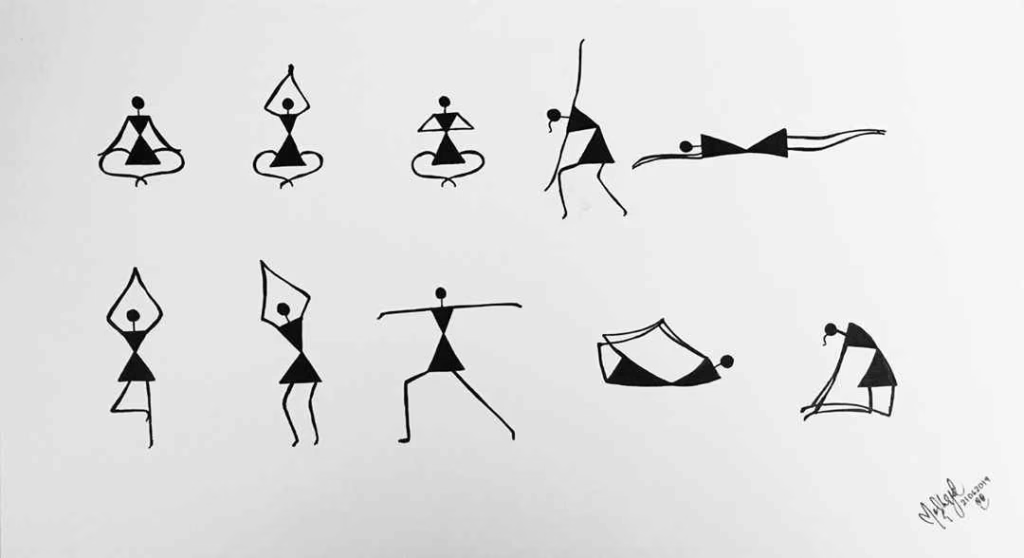
Pattachitra paintings, hailing from Odisha, are steeped in spiritual symbolism, often depicting stories from Hindu mythology. The artist enters a trance-like state, focusing on divinity, allowing the art to flow through them as if guided by divine breath itself. In these moments, time dissolves, much like the transcendence sought in meditation. Researchers at the Indian Institute of Technology (IIT) Delhi in 2019 found that artists who engaged in meditative practices experienced increased cognitive abilities, such as enhanced memory and creativity. For Pattachitra artists, this mental clarity is vital to the intricate detailing required for their works.
The relationship between meditation and art is not a modern construct. It is deeply embedded in the ancient cultural fabric of India. Every line drawn, every symbol painted, is a form of dhyana—a meditation, an act of becoming one with the universe. As Free Sky Breath Meditation spreads globally, its practice enriches the understanding of traditional Indian art forms, bringing them into the present with a renewed sense of spiritual depth. The meditation of the breath, coupled with the meditation of the hand, creates art that is not just seen, but felt deeply, as a sacred act of both creation and contemplation.
Symbolism in Indian Art: A Connection to Meditation
In Indian art, symbolism isn’t merely decorative—it is the language of the soul, a language that speaks of hidden realms, invisible connections, and the breath of life. The intricate symbols embedded in these artworks carry layers of meaning that extend far beyond the surface. Free Sky Breath Meditation, a practice rooted in the simple yet profound act of breathing, finds its echo in these symbols, bringing them to life in a very particular way.
The lotus, for example, is an ancient symbol in Indian art, representing spiritual rebirth and enlightenment. Its association with meditation is profound. The lotus rises from the mud, a visual metaphor for the mind’s potential to rise from the murk of distractions and find clarity. Scientific studies have found that breath-focused meditation can reduce stress hormones by up to 40%, promoting mental clarity. The lotus, then, becomes more than a symbol—it is a visual embodiment of the peace sought in meditation, with its petals unfurling as the mind does when it focuses on each breath.
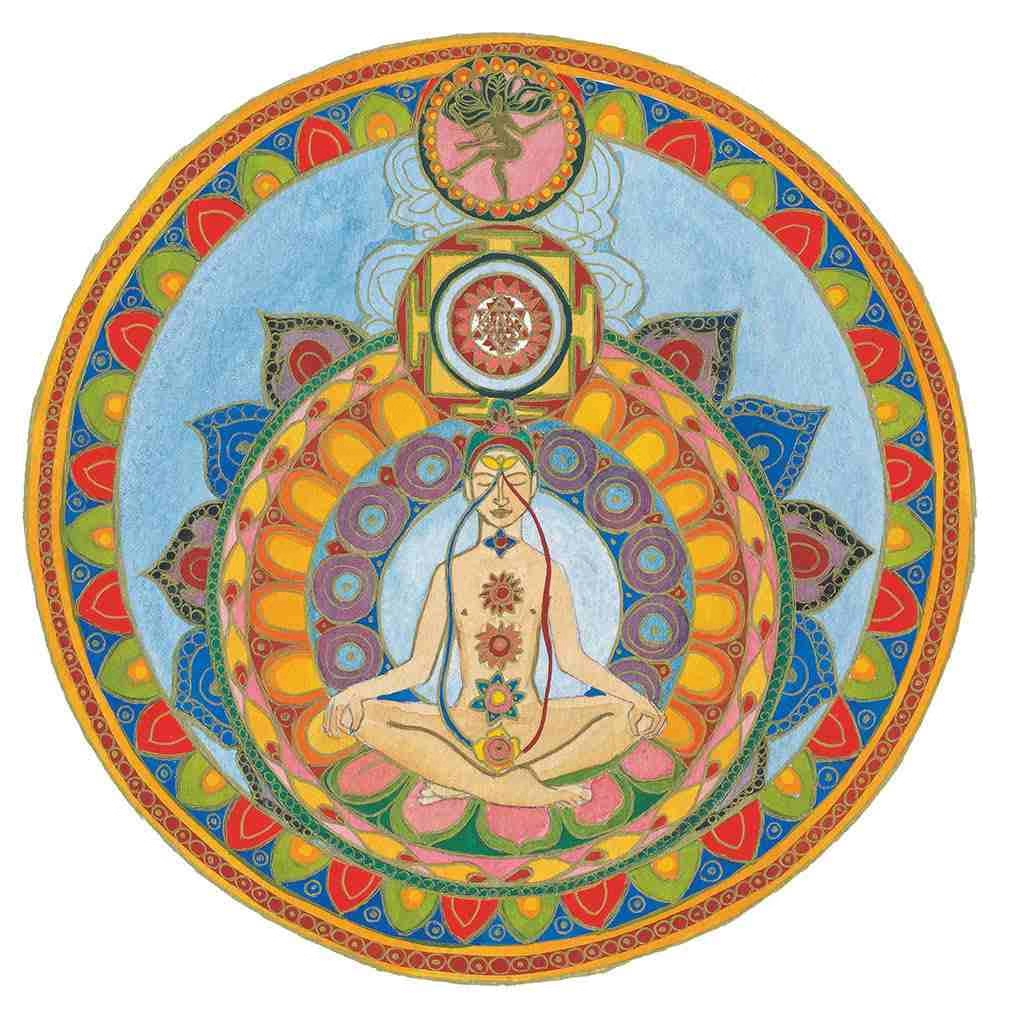
Equally significant is the mandala, which has been used in Indian art for centuries. A mandala is a geometric pattern, usually circular, representing the universe. Its structure reflects the flow of energy, mirroring the very act of breathing. The breath, expanding and contracting, creates an energetic flow within the body, just as the mandala’s symmetrical design represents the harmonious balance of energies in the universe. In meditation, the breath follows a rhythmic pattern, similar to the repetitive cycles found in mandalas. Psychologists have found that gazing at mandalas can significantly improve focus and reduce anxiety, aligning the mind with the calm induced by breath-centered meditation.
The concept of Prana—life force—is the very essence of breath. This vital energy is central not just to meditation but to Indian art as well. In traditional Madhubani or Pattachitra paintings, the spirals and flowing lines are not arbitrary; they represent the movement of Prana within the body. The spirals echo the movement of breath, the continuous cycle of inhalation and exhalation. This idea of energy flow is mirrored in the brushwork of these art forms, where every stroke carries with it a sense of rhythm—an embodiment of the flow of life itself.
Indian art doesn’t just represent life—it connects to it. The tree of life, often depicted in vibrant colors, is another recurring motif. This symbol links all living things, grounded in the earth while reaching for the sky. It is both the metaphor for spiritual growth and the actual depiction of the interconnectedness of all life. In the same way, Free Sky Breath Meditation connects the individual to the vastness of existence through the simple act of breathing. Each inhalation brings in new life, while each exhalation releases the old, a direct parallel to the life cycle symbolized in art.
In this way, art and meditation are not separate; they are two sides of the same coin, both striving to dissolve the boundaries between the self and the universe. When one practices Free Sky Breath Meditation, the freedom of the breath—unencumbered, expansive, limitless—mirrors the expansiveness of the skies depicted in Indian art. The breath flows like the winds, like the rivers, and like the infinite sky. Both the art and the practice invite us to embrace this expansive freedom, to let go, to be present, to align with something far greater than ourselves.
Integrating Free Sky Breath Meditation with Indian Art Practices
Free Sky Breath Meditation merges with Indian art practices in ways that speak directly to the spirit of creative endurance. The act of meditative breathing has been shown to significantly enhance focus. In one study, mindfulness practices improved attention span by 16%, allowing individuals to maintain sustained concentration for longer periods (Source: American Psychological Association). For the artist, this focus is essential—particularly in art forms like Pichwai painting, where intricate details are meticulously painted over days or even weeks.
The deep, rhythmic breathing of Free Sky Breath Meditation mirrors the meditative approach required in such detailed forms. Take Madhubani art, for example. It is said that the repetitive, flowing patterns in these paintings echo the natural rhythm of breath, linking body, mind, and canvas. The process requires more than technical skill; it demands an inner calm that allows the artist to channel both energy and intuition into the work.
Research shows that meditation reduces cortisol, the stress hormone, by 25% (Source: National Institute of Health), allowing artists to enter a state of relaxed concentration. This is critical in Tanjore painting, where precision is key in creating vibrant, gold-leaf-embellished works that require meticulous patience. The synergy between meditation and art leads to the creation of works that transcend the surface, reaching deeper, more spiritual realms.
Conclusion: Achieving Inner Peace Through Meditation and Art
In traditional Indian art, the themes of tranquility, spirituality, and harmony mirror the essence of meditation. Art forms like Madhubani and Kalamkari use symbols that promote peace—just like meditation does. The repetitive strokes in these art forms can evoke a sense of calmness similar to deep breathing in meditation.
Practicing Free Sky Breath Meditation enhances the connection with oneself and the world around. It reduces the mental clutter that often hinders our ability to appreciate art. In this way, meditation and art become intertwined, both cultivating a sense of mindfulness. By immersing in these practices, we not only find calm but also experience a deeper, richer connection to Indian culture.
As we engage in meditation, we breathe life into art, and through art, we breathe life into our spiritual journey. The combination of Free Sky Breath Meditation and traditional art fosters a holistic well-being that nurtures both body and mind.
For further reading on significance of Free Sky Breath Meditation, you can visit these useful resources:
- Free Sky Breath Meditation
- Free Sky Breath Meditation practices
- Free Sky Breath Meditation to Increase Inhaled Nitric Oxide
- Free Sky Breath Meditation mindful pratices
Check out our Blog Page on Traditional Indian art.

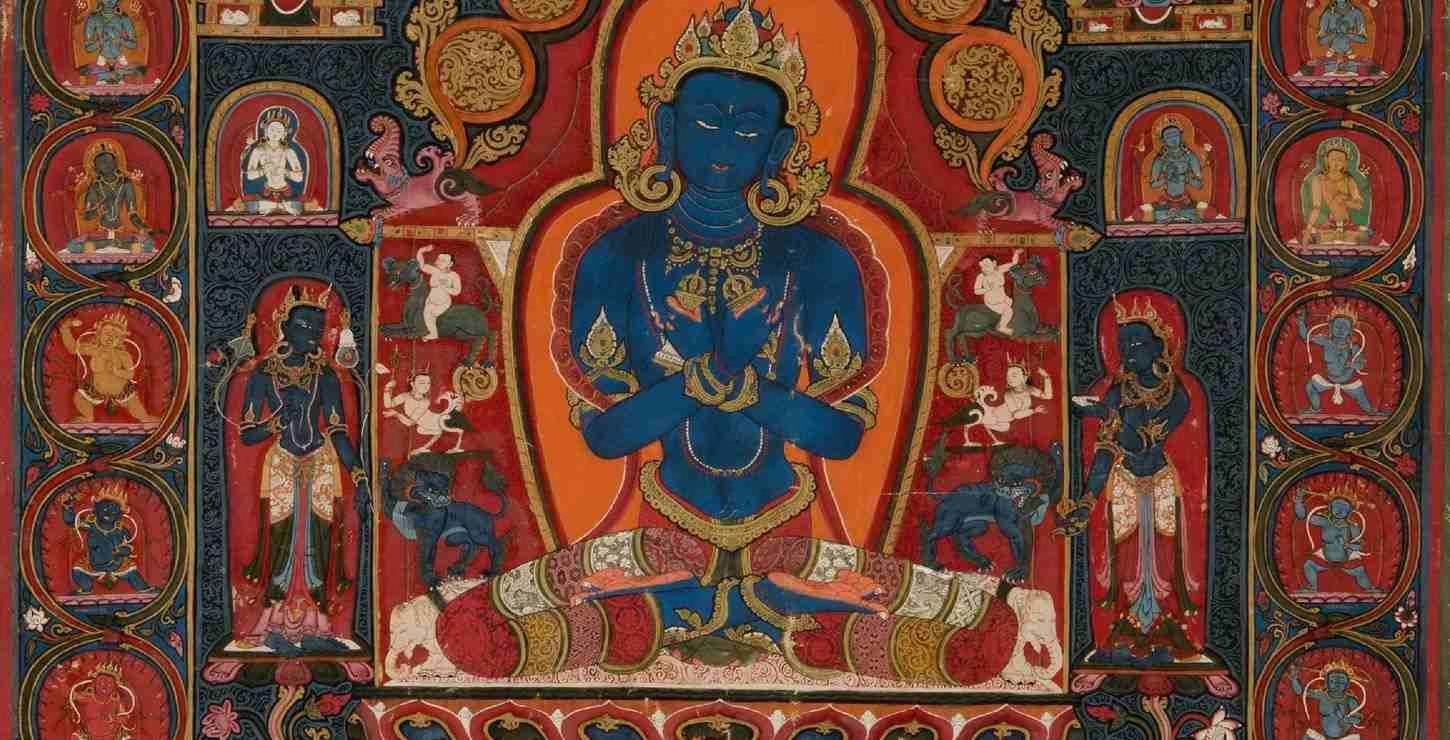
Leave a Reply